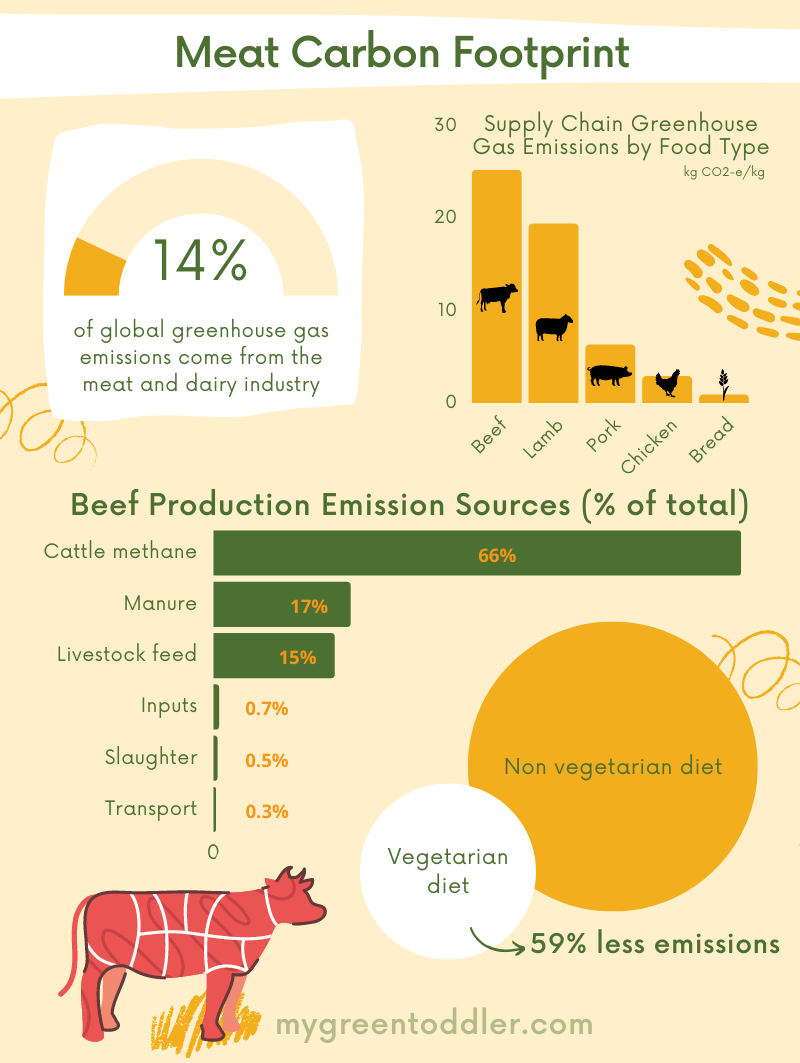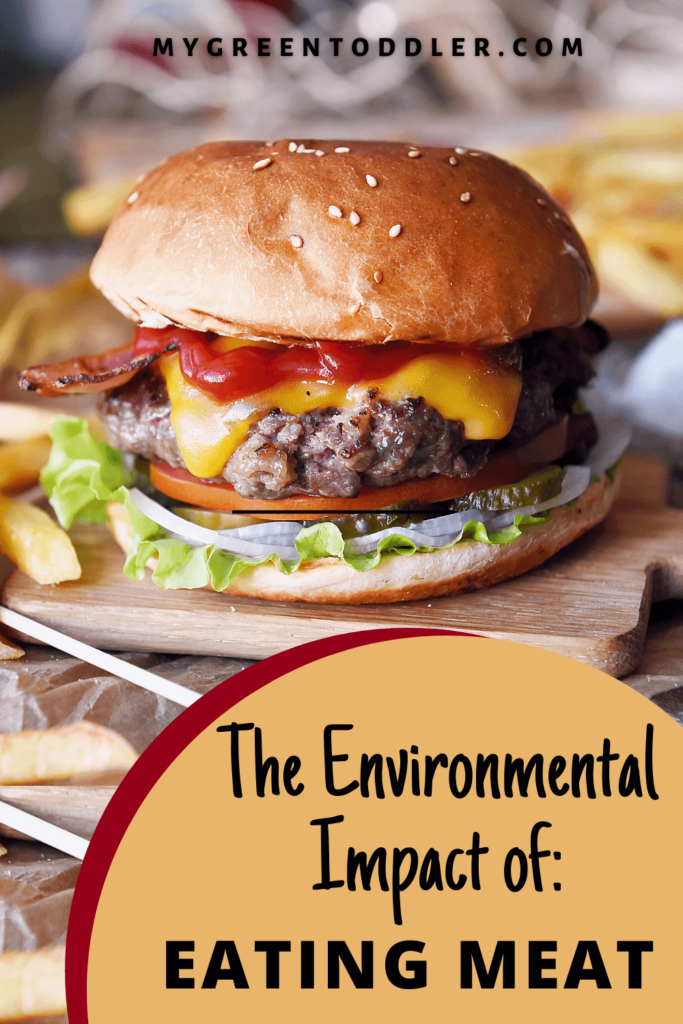Learn how meat consumption contributes to your carbon footprint.
The environmental impact of meat production is a pressing issue that deserves more attention. Raising livestock for meat takes a toll on the environment in a number of ways. For one, cows and other livestock produce methane, a potent greenhouse gas. In addition, meat production requires vast amounts of land and water, and contributes to deforestation and soil erosion. All of these factors together make meat production one of the leading sources of climate change emissions.
The meat and dairy industry makes up a whopping 14% of all global carbon emissions!

How does eating meat impact climate change?
Does all meat have the same carbon footprint? No! Beef production has the largest carbon footprint, followed by lamb. Comparatively, pork and poultry production emit less than half the greenhouse gases of beef and lamb. Interestingly, lower emission meat in poultry and pork together account for 76% of meat consumption globally.
A common perception is that buying locally will reduce the climate impact of meat. There are many reasons to buy local, but the impact on carbon footprint is negligible, at least for beef.
Transportation accounts for just 0.3% of beef’s carbon emissions. The most significant emission source for beef is by far cattle methane emissions, followed by manure. Yes it’s true, cows farting (and burping) contribute massively to carbon emissions. The other significant emission source for beef is livestock feed.
It’s not all bad news though. Emissions from beef production in the US has decreased over the last 50 years. 15% fewer cattle is being used to produce 20% more meat.
If you’re not ready to become vegetarian yet, consider choosing meat a with lower carbon footprint rather than beef. If you’re wondering how meat production compares to plant based foods, the carbon footprint of bread is less than half that of chicken and less than five per cent of the carbon footprint of beef.
And a vegetarian diet creates 59% less greenhouse gas emissions than a non-vegetarian one!
Watch this 2min video to see the environmental impact of meat production if you’re more of an audio visual learner.
What are the other environmental impacts of meat consumption?
Meat production requires vast amounts of land for livestock to graze and to grow feed for livestock. Land clearing to create space impacts on carbon emissions by felling trees but is also having a huge impact on biodiversity. Biodiversity hot spots like the Amazon and land bordering the Great Barrier Reef are some of the areas being encroached upon.
Researchers have projected that by 2050, over one thousand species will lose at least 25% of their habitats if no changes are made. As a result, some species face extinction.
Water required for meat production is also much higher than for plant based foods. To compare, producing 1kg of meat requires 5000 – 20,000 litres of water but 1kg of wheat requires only 500 – 4000 litres of water.
Huge amounts of wastewater are also generated from slaughterhouses. Effluents contain a complex mix of proteins, fats, organic components, pathogens and anti-biotics that are harmful to the water bodies they are discharged into.

Are you convinced to reduce your meat consumption?
Have you reduced your meat consumption or cut it out completely? What was the main reason? Let me know in the comments.
More ways you can help the environment
- 25 of the best sustainability books to inspire action
- 25 Vegetarian Dinner Recipes
- 11 Easy and Free Ways to Help Save the Planet
